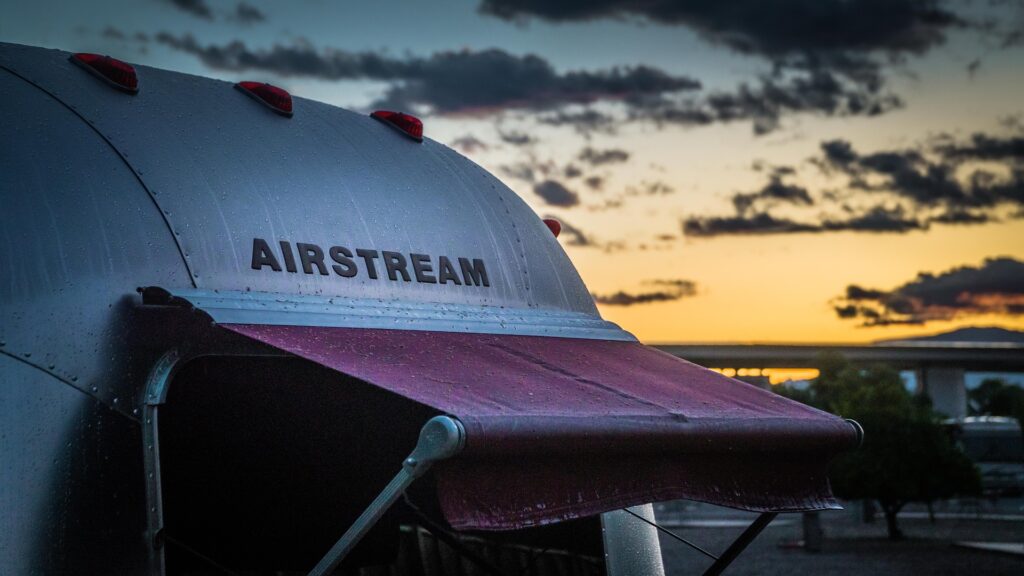We're an affiliate. We hope you love the products we recommend! Just so you know, we may collect a share of sales or other compensation from the links on this page. Thank you if you use our links, we really appreciate it!
There’s nothing quite like the freedom of the open road. When you’re driving an RV, the world is your playground. But what happens when you need to plug in your appliances? Do outlets work in an RV while driving?
While driving, the outlets in your RV can work in some cases. One of them is when the generator is on. They will also work if the inverter is on. The generator will provide power like the shore power, while the inverter will convert the 12-volt coach battery to 120-volt power that’ll power the outlets.
In this blog post, I’ll explore the different scenarios in which outlets may or may not work in an RV while driving.
What Powers the Outlets in an RV?
There are three main ways that the outlets in an RV can be powered: by the generator, the shore power, or the inverter.
Do Outlets Work in an RV While Driving?
The following cases are when outlets work in an RV while driving:
When the Generator is On
The generator for an RV is usually located on the vehicle’s exterior. It provides power to the outlets by converting the chemical energy in gasoline into electrical energy.
The generator is the only way to charge RV batteries because the RV will most likely not charge the second battery while driving. The generator needs to be on to provide power for the outlets.
When the Inverter is On
The inverter in an RV converts the 12-volt coach battery into 120-volt power, which will then power the outlets. The inverter must be turned on manually and can usually be found near the electrical panel. The inverter can also charge RV batteries while driving, which is a plus.
However, keep in mind that running the inverter for too long will drain the coach’s battery. It’s essential to monitor the voltage of the coach battery while the inverter is on to avoid any damage.
Why is a 12v to 120v Inverter Necessary in a VR?
RV appliances need 120 volts to work, but the battery that an RV uses is only 12 volts. To use 120-volt devices, an RV needs a 12v to 220v inverter.
The inverter takes the 12 volts from the battery and converts it into 120 volts. This then powers the outlets in the RV, allowing you to use appliances while driving.
How to Choose the Right Inverter for Your RV
Here are the things you should know before choosing an inverter for your RV:
The size of the inverter: Inverters are available in different sizes, and you’ll need to choose one that’s appropriate for your RV. The size is measured in watts, and you’ll need to calculate the wattage of the appliances you want to use while driving.
For example, if you want to use a coffee maker (500 watts) and a toaster (1000 watts), you’ll need an inverter of at least 1500 watts.
The type of inverter: There are different inverters: modified and pure sine waves. The modified sine wave is less expensive but will not work with some appliances. The pure sine wave is more expensive but will work with all devices.
The inverter features: Some inverters have additional features, such as USB ports and a built-in battery charger. These features can be convenient, but they’ll also add to the cost of the inverter.
Do Outlets Work in an RV While Driving?
The following cases are when outlets DON’T work in an RV while driving:
When the Shore Power is Off
The shore power powers the outlets when the RV is plugged into an electrical hookup at a campground.
If the shore power is turned off, the outlets will not work. In this case, you need to use the generator or the inverter to power the outlets.
When the Generator and Inverter are Off
If both the generator and inverter are turned off, the outlets will not work. The RV will need to be plugged into shore power or have the generator turned on to use the outlets.

How to Use the Outlets in an RV While Driving
Now that you know under what circumstances the outlets will work in an RV while driving, let’s review how to use them.
Turn On the Generator
It would be best if you made sure that the generator is turned on before using any of the outlets in the RV. The generator provides power to the outlets by converting the chemical energy in gasoline into electrical energy.
To turn on the generator, locate it on the RV’s exterior. Then, use the key to start it up. Once it’s running, you can begin using the outlets.
Monitor the Generator
Once the generator runs, you need to monitor it to ensure it doesn’t overheat. If the generator overheats, it can damage the electrical system in the RV.
To avoid this, keep an eye on the temperature gauge on the generator. If it gets too hot, turn off the generator and let it cool down.
Turn On the Inverter
You’ll need to turn on the inverter to use the outlets while driving. The inverter converts the 12 volts from the battery into 120 volts, which powers the outlets.
To turn on the inverter, locate it near the battery. Then, flip the switch to the “on” position.
Use One Outlet at a Time
It’s essential to only use one outlet at a time when the inverter is on. If you try to use more than one outlet, you’ll overload the system and blow a fuse.
Can You Use Solar to Power Your Outlets While Driving?
If you have a solar panel on your RV, you might wonder if you can use it to power the outlets while driving. Unfortunately, solar panels will not work while the RV is moving. This is because the panels need to be exposed to sunlight to generate power.
While driving, the panels won’t be angled correctly to get direct sunlight, so they won’t be able to generate enough power to run the outlets. However, if you’re parked in a sunny spot, you can use solar panels to power the outlets. Just make sure that the panels are positioned correctly to get direct sunlight.
Can You Use Shore Power to Power Your Outlets While Driving?
Shore power is another option for powering the outlets in your RV while driving. However, shore power will only work if the RV is plugged into an electrical hookup at a campground. If you’re plugged into shore power, the outlets will work.
So, if you want to use shore power to power your outlets, you’ll need to find a campground with electrical hookups and park the RV. Once you’re plugged in, the outlets will work.
Conclusion
Outlets work in an RV while driving in some cases but not others. If you want to use the outlets while driving, you’ll need to turn the generator or inverter on. You should also only use one outlet at a time to avoid overloading the system. The information in this article has been helpful. Thanks for reading.

We’re passionate about getting the most from your car when it comes to going on adventures and road trips. When you take one of these trips you often need more room in your car than you usually would. This is when we come in, to help you find the best roof tent for your car and needs.

